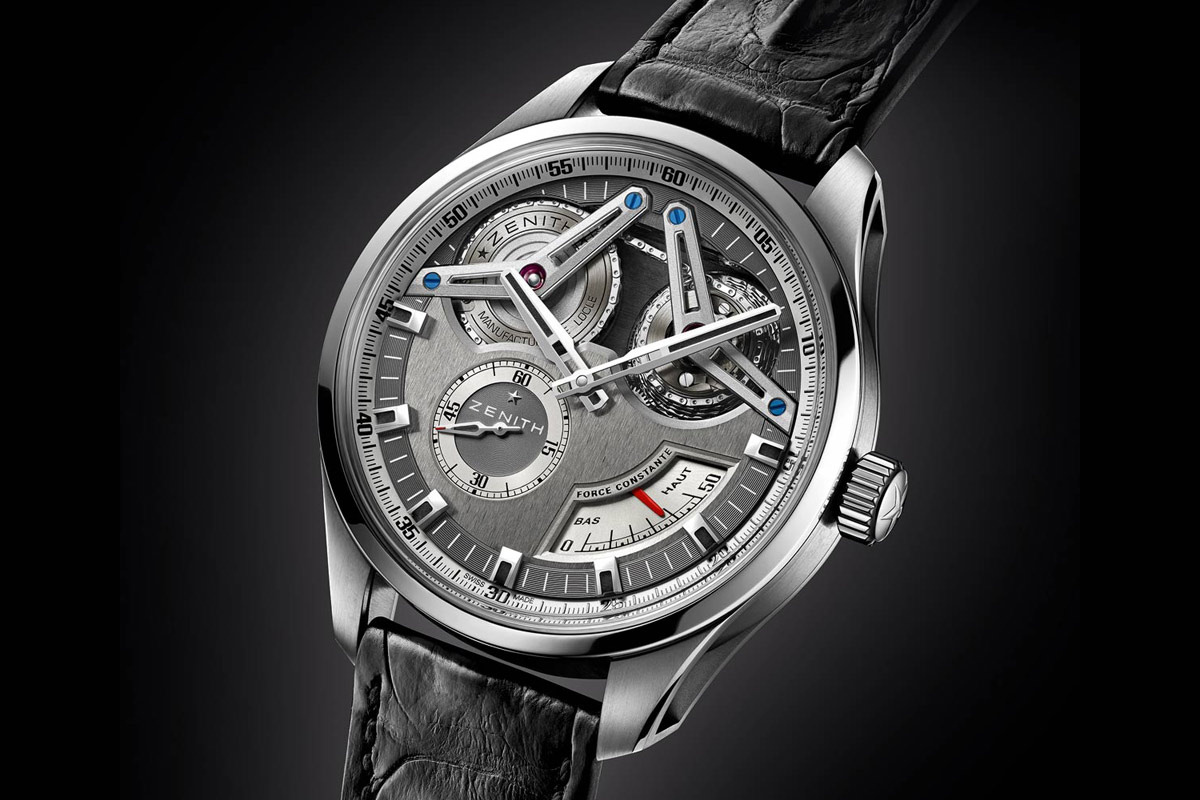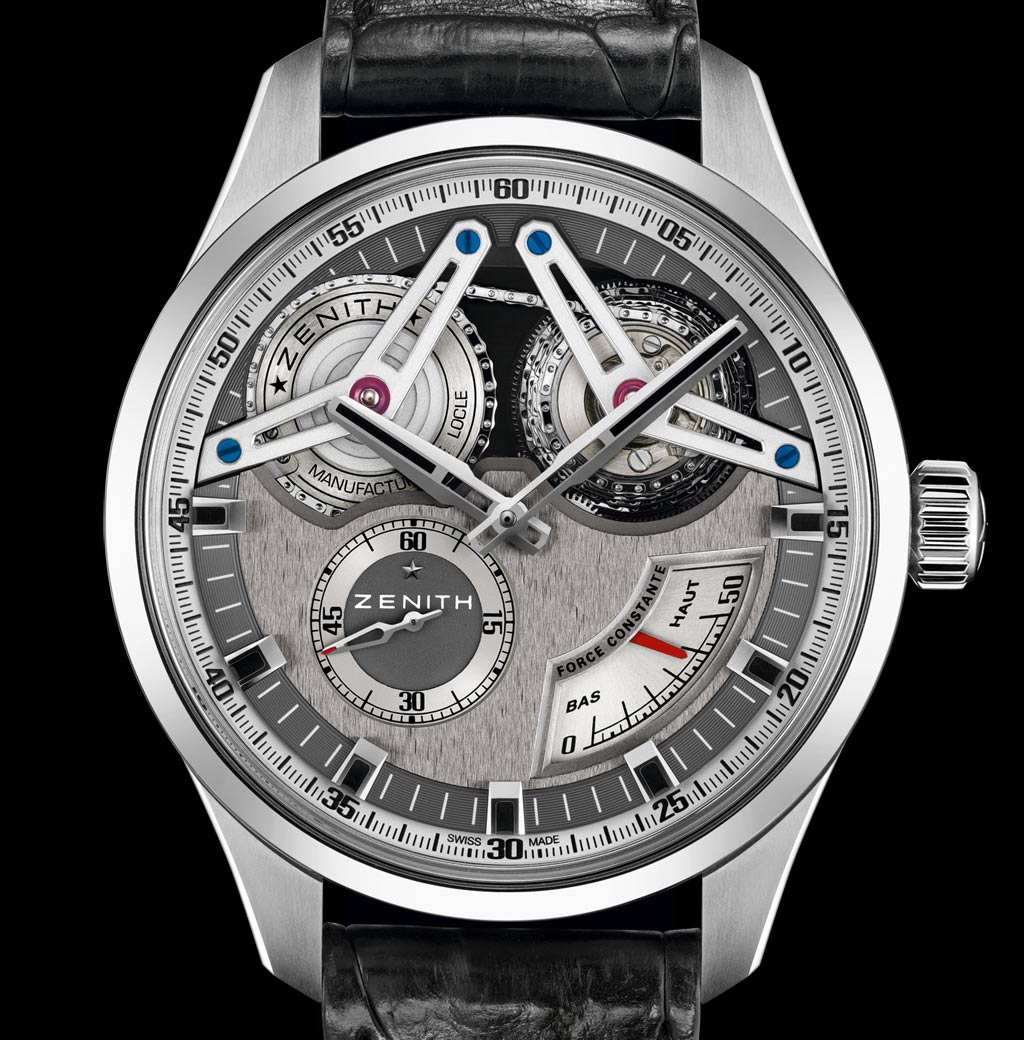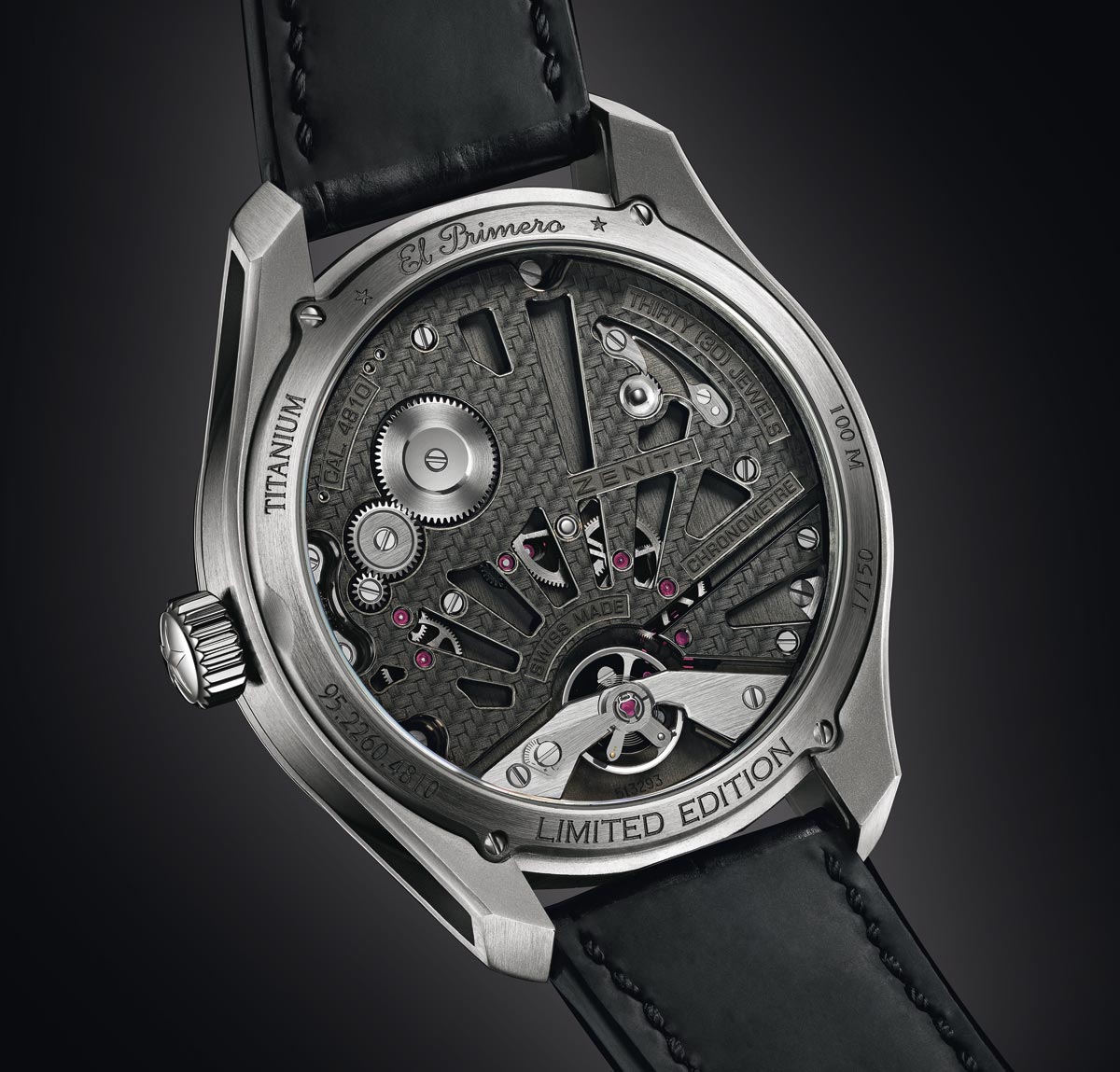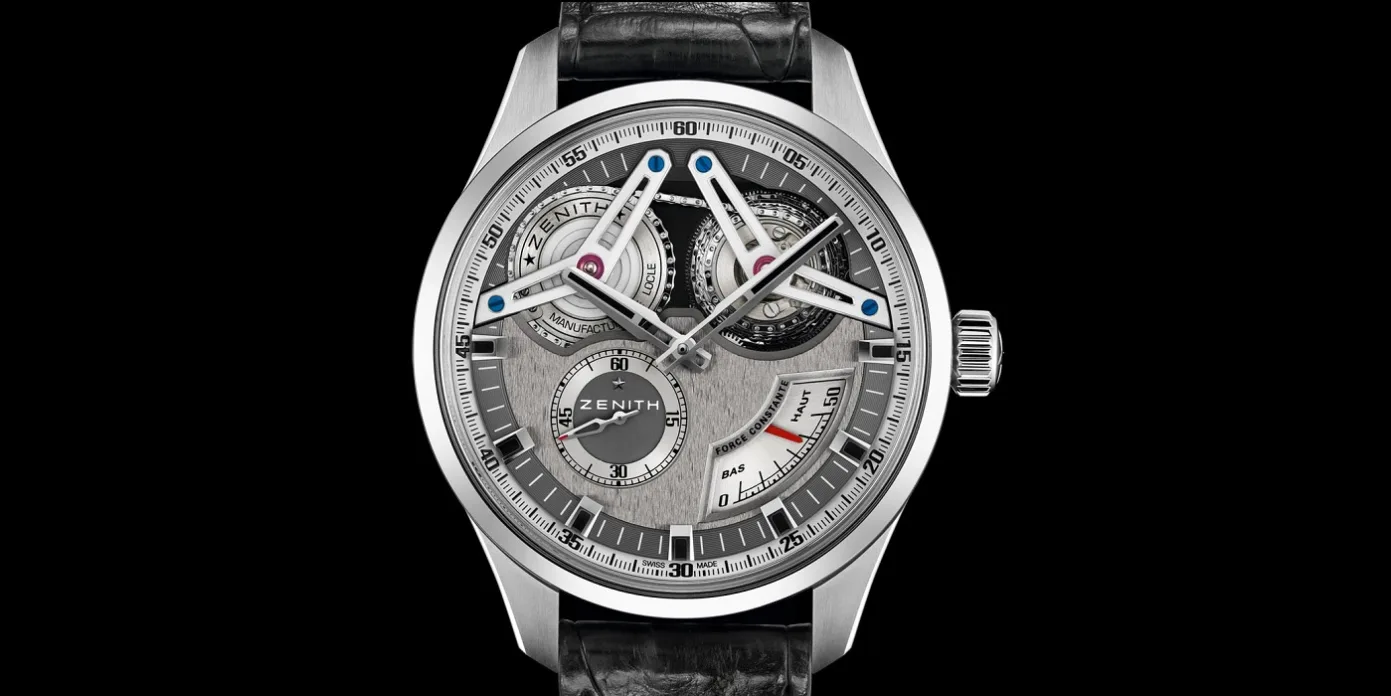By Meor Amri Meor Ayob
Slightly over a year ago, in November 2014, I reviewed the special Zenith Academy Georges Favre-Jacot limited edition timepiece in rose gold, which honors the founder of the brand. Powered by the intricate chain and fusée mechanism system, the COSC certified high-frequency hand-wound El Primero 4810 movement. The review can be found here.
This year, the same movement is encased in a sportier watch, the new Zenith Academy Georges Favre-Jacot, now in Titanium.

Fundamentally, the mechanicals and the complications on the dial of this new Zenith Academy Georges Favre-Jacot Titanium is the same as the previous Academy Georges Favre-Jacot. Nevertheless, the esthetics changes Zenith incorporated for this model makes it look and feel like a different watch. This is very ingenious of Zenith. Take a look at the comparative shot of the two models below.

The first Academy Georges Favre-Jacot is everything of a traditional watch. It features a gold case, with a classic shape and a movement decorated in the most classical way. This is expected as the watch was supposed to honors the first 150 years of the brand.
Zenith Academy Georges Favre-Jacot Titanium model also in honor of the 150-year history but instead of looking at it retrospectively, Zenith is looking at this watch as a prospective look at the future of the company. The modern twist is subtle, but the effect is obvious and spectacular.
What are the differences between these two models? The base material is the most obvious, grade 5 titanium instead of rose gold. The Titanium version is also a slightly wider, measuring 46 mm, 1 mm more that the rose gold version. It is also thinner at 14.05 mm thick, 0.30 mm thinner than the rose gold version.

A more modern crown style was incorporated in the Titanium version which helps explained the much higher water resistance capability of the Titanium version of 100 meters compared to just 30 meters for the rose gold version. The higher water resistance further reinforces its more sporting watch credentials.
Although the indications are the same on the dial for both models, the design is different. The hands are different and the power reserve now has a gauge design, with a contrasting red hand. The fusée-chain system is now no longer coated in rose gold which allows one to see the gears more clearly. Meanwhile, the large bridges placed on top of the dial are sportier, more technical and modern.

There are also changes in the case-back. In the Zenith Academy Georges Favre-Jacot Titanium, you will find a black carbon, almost basket-weaved pattern on the case-back unlike the previous three-quarter bridge with gold plating and Geneva stripes in the rose gold version.
The Zenith Academy Georges Favre-Jacot Titanium is limited to just 150 pieces and comes with a price of CHF69,000.
This reinterpretation of the Academy Georges Favre-Jacot is more in line with my taste. The sportier look and the more robust construction (higher water rating) represent better value to me compared to the rose gold version.
When I reviewed the rose gold version last year, I was impressed with Zenith for choosing a simple design watch without too many complications to mark its 150 years in existence. It is becoming very fashionable by watch brands to fit in as many complications as possible into a typical watch casing to show-off. These brands fail to realize that a wrist watch is only useful if it can be used in the real world. As it stands, these so-called “super complicated watches” are so fragile that the only thing it wraps itself around is a pillow case in a display cabinet.
With this model, Zenith reinforces its expertise by highlighted the iconic El Primero as well as its skill at marrying a very complicated system in the form of a fusée and chain mechanism to an already accurate movement. The ability to “modernize” a traditional looking watch without major redesigning is a testament of Zenith design skills. For more info, please visit zenith-watches.com

MEOR AMRI MEOR AYOB – CONTRIBUTING EDITOR
Meor Amri is a passionate watch collector from Kuala Lumpur, Malaysia. Having bitten by the horology bug in 2010, he has written extensively about the watch scene and has assembled a large collection of watches (excessively!!!) on his own free time. His blogs on the same subject are: Eastern Watch & Western Watch Read his articles here



